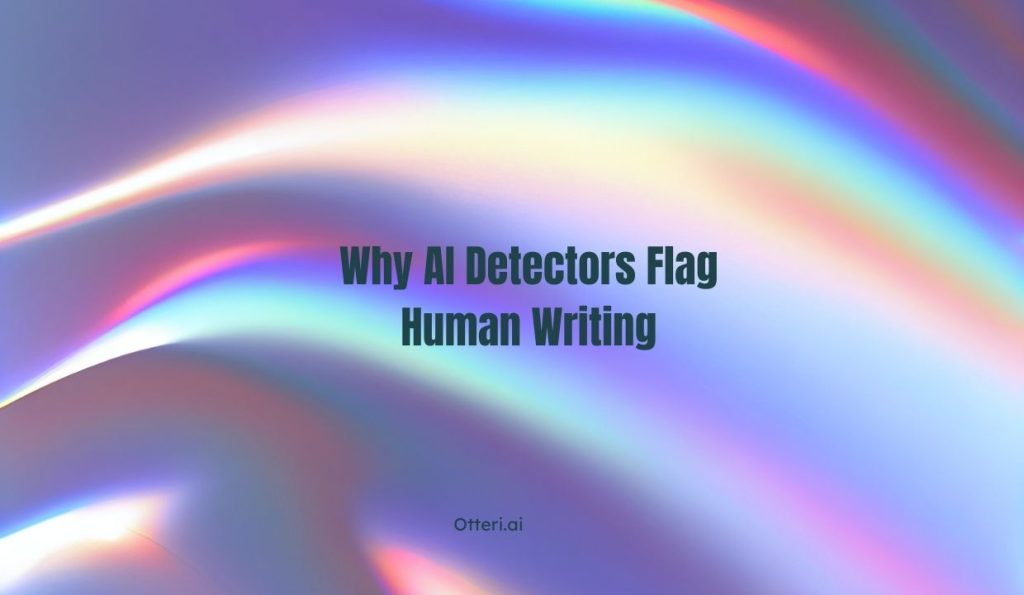
AI-generated content detection tools often flag human writing as AI. Learn how these systems work and how to ensure your content reads as authentically human. In today’s content-driven digital world, artificial intelligence has become a key player in writing, editing, and even analyzing content. While AI tools offer incredible convenience, they also bring new challenges. One such issue? Your original writing might get mistakenly flagged as AI-generated.
If that’s ever happened to you, you’re not alone. Let’s look at how AI-generated content detection works, why human writing can get misidentified, and what you can do to ensure your work is seen as genuinely your own.
What Is AI-Generated Content Detection?
AI content detectors are tools built to identify whether a piece of writing was created by a human or by an AI model. Platforms like Turnitin, GPTZero, and Originality.ai scan text for clues that suggest it was generated by language models such as ChatGPT, Claude, or Gemini.
These systems analyze things like:
-
Perplexity, which measures how predictable or repetitive the text is
-
Burstiness, which looks at variation in sentence length and structure
-
Semantic patterns, focusing on how natural or linear the flow of ideas is
-
Syntactic structure, identifying sentence forms that resemble machine-generated content
When writing appears overly structured, perfectly logical, or emotionally neutral, detectors may flag it as AI, even when it’s not.
Why Human Writing Sometimes Gets Flagged
AI detectors are helpful, but they’re not perfect. Many writers have seen their fully original work misclassified. There are a few reasons why this happens.
Overly structured writing can be a red flag. If your content follows a very rigid format with neatly equal paragraphs and consistent transitions, it may look more machine-like than human.
Using tools like Grammarly or paraphrasing apps can also change the tone and style of your writing. These tools often polish text so much that it starts to resemble AI output, especially when everything becomes grammatically perfect and tonally flat.
A very formal or technical tone might trigger false positives, too. If you’re writing with heavy academic language, lots of jargon, or complex passive constructions, it might mirror AI-written research articles.
And finally, when writing lacks a personal angle—no opinions, no emotions, no stories—it can feel too impersonal, which is a common trait in AI-generated text.
How AI Detection Tools Actually Work
Behind the scenes, these tools are powered by machine learning. They’re trained using large datasets of both AI-written and human-written content. From there, they identify patterns, word choices, sentence flow, and even the “voice” of the text.
Most detectors scan for things like:
-
How often do certain words appear
-
How predictable the sentence structure is
-
Whether the content matches known AI writing styles
-
Overall readability and tone
They don’t understand your intentions—they’re just scoring based on patterns. That’s why even well-written, thoughtful human content can get caught in the net.
How to Make Sure Your Writing Feels Human
If you’re writing for a client, professor, editor, or publishing platform, and you want to avoid being flagged by AI detectors, here are some practical tips to help your writing come across as naturally human.
Add a personal touch.
Even small details, like sharing your opinion, referencing a personal experience, or cracking a light joke, can help show that your writing comes from a real person.
Break the rhythm.
AI tends to write in a very balanced way—similar sentence lengths, even pacing. Try mixing it up. Use a short sentence. Then try a longer one that builds with more detail or explanation. Variety helps.
Leave in a few natural quirks.
You don’t need to be messy, but don’t over-polish your text either. A casual contraction or an intentionally informal phrase can make a big difference.
Don’t rely too heavily on rewriting tools.
If you’re using AI or grammar apps, that’s okay—but use them as guides, not editors. Keep your natural voice in the mix.
Make your voice heard.
Take a stance. Share a viewpoint. Express curiosity or doubt. These are things humans do all the time, and AI doesn’t do as naturally.
What If You’re Using AI to Help?
Let’s be honest—AI can be incredibly useful. Whether you’re brainstorming, organizing ideas, or speeding up repetitive tasks, it’s become a common part of the writing process.
If you do use AI, that’s fine. But make sure to:
-
Rewrite content into your own voice
-
Add unique insights or commentary
-
Avoid copy-pasting entire paragraphs without review
-
Be transparent, especially in academic or journalistic settings
You don’t need to hide AI use, but the result should reflect you, not just the tool.
Looking Ahead: The Evolving Role of AI Detection
Both AI writers and AI detectors are getting better by the day. Tools are becoming more nuanced and human-like, and detection systems are keeping pace with smarter analysis techniques.
This ongoing cycle will likely continue, but the core takeaway remains the same: thoughtful, authentic human writing stands out.
As more people adopt AI in their workflows, the ability to layer in real voice, personality, and insight will be what separates strong content from generic output.
If your writing has ever been flagged as AI-generated, don’t take it personally. These tools analyze structure and probability, not context or creativity. It’s not about whether your content is good—it’s about whether it fits certain statistical patterns.
By understanding how these systems work and making a few intentional tweaks to your style, you can write confidently, knowing your work will be recognized as your own.
In a world full of automation, your human voice still matters most.
At Otteri.ai, we believe in empowering creators with the right tools and insights to stay ahead of AI detection systems. Explore our tools or get started today!